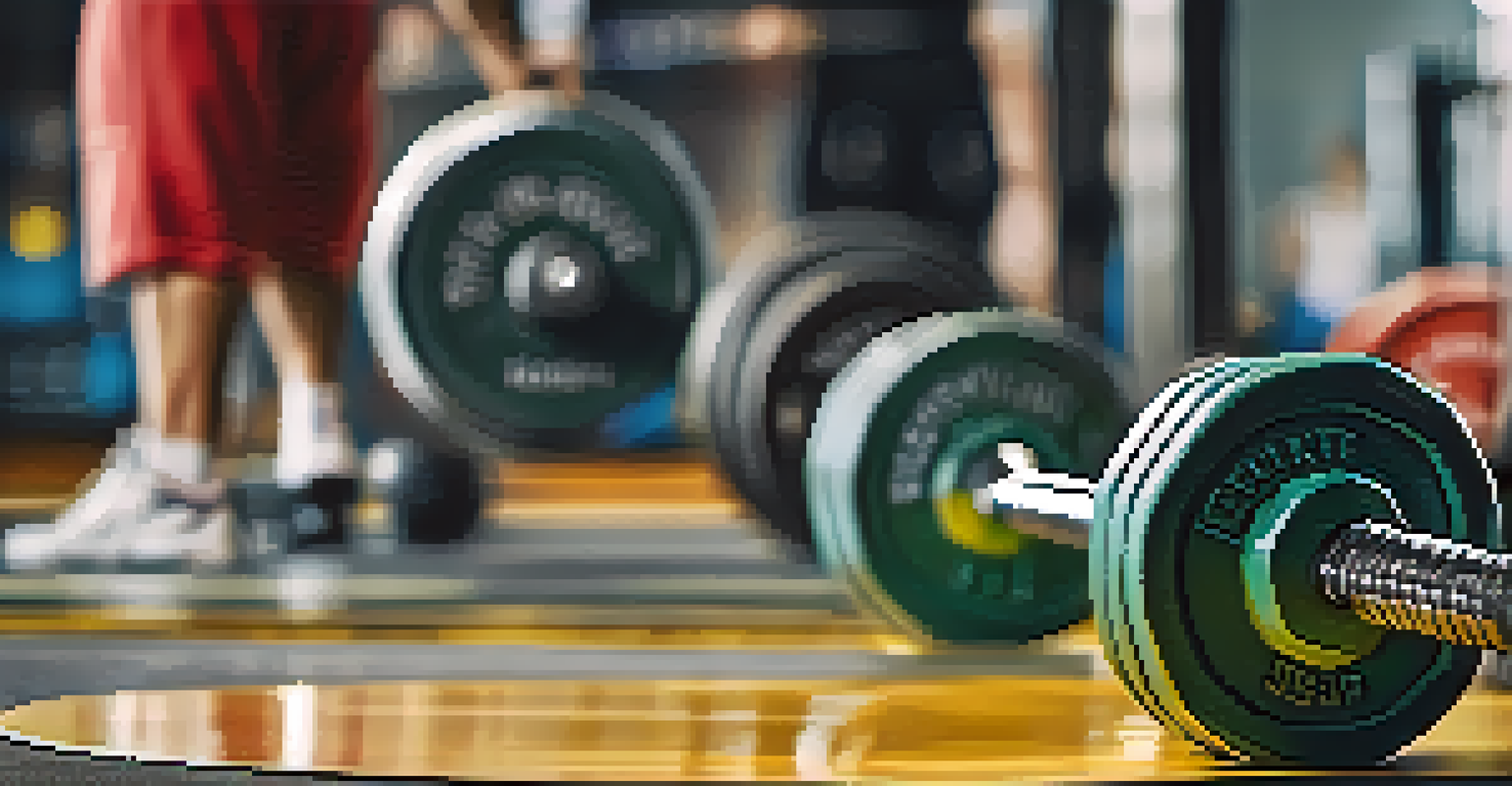The Role of Progressive Overload in Powerlifting Success

What is Progressive Overload in Powerlifting?
Progressive overload is a training principle that involves gradually increasing the stress placed on your muscles during workouts. In the context of powerlifting, this means consistently adding weight, increasing repetitions, or enhancing workout intensity over time. The goal is to push your limits while avoiding plateaus, ensuring continuous gains in strength and performance.
Strength does not come from physical capacity. It comes from an indomitable will.
Imagine your muscles as a sponge; when you apply pressure, they absorb and expand. However, if you don’t apply more pressure over time, they will stop growing. By implementing progressive overload, you ensure that your muscles are always challenged, leading to improved powerlifting results.
This principle isn’t just about lifting heavier weights; it can also involve varying your workout techniques, such as changing the tempo of your lifts or incorporating different exercises. Ultimately, it’s about creating an environment where your body must adapt and grow stronger.
Why is Progressive Overload Crucial for Powerlifters?
For powerlifters, progressive overload is essential because it directly correlates with strength gains and competition readiness. Without this gradual increase in demands, your muscles can stagnate, leading to frustration and a lack of progress. Essentially, if you're not challenging your body, you’re not going to see significant improvements in your lifts.

Moreover, progressive overload helps to build muscle mass, which is vital for powerlifting. More muscle means more strength, allowing you to lift heavier weights. This cycle of growth is what separates those who succeed in powerlifting from those who struggle to make advancements.
Progressive Overload Fuels Growth
Gradually increasing the demands on your muscles is essential for continuous strength gains in powerlifting.
Additionally, it teaches discipline and consistency, two key traits for any successful powerlifter. By committing to a structured plan that emphasizes gradual progression, you develop a strong foundation of mental resilience that translates into your lifting.
Implementing Progressive Overload in Your Routine
To effectively incorporate progressive overload into your powerlifting routine, start by setting clear, achievable goals for each training cycle. This could mean aiming to increase the weight on your squat, bench press, or deadlift by a certain percentage every few weeks. Tracking your progress is crucial, as it allows you to see where you started and how far you’ve come.
The only bad workout is the one that didn’t happen.
Consider the 2.5% rule: for each lift, try to increase the weight by 2.5% each week. This small increment can lead to substantial gains over time, making it manageable to push your limits without risking injury. It’s a gradual approach that aligns perfectly with the principle of progressive overload.
Remember to listen to your body and adjust your training as needed. If you’re feeling fatigued or notice a decline in your performance, it may be time to deload—temporarily reducing the weight or intensity to allow your muscles to recover. This strategic rest can be just as important as pushing your limits.
Common Mistakes to Avoid with Progressive Overload
One of the most common mistakes powerlifters make is increasing weight too quickly. While it’s tempting to try and lift heavier, doing so can lead to poor form and increase the risk of injury. It’s important to prioritize correct technique over heavier weights, ensuring that your lifts are safe and effective.
Another mistake is neglecting other forms of progressive overload, such as adjusting volume or intensity. Focusing solely on weight can lead to burnout or overtraining. It’s crucial to remember that progressive overload encompasses various strategies, including changing the number of sets and reps or altering your lifting tempo.
Nutrition Supports Training Success
Proper nutrition, including adequate protein intake and hydration, is crucial for optimizing performance and recovery in powerlifting.
Lastly, some lifters forget the importance of recovery. Progressive overload requires your muscles to recover adequately to grow stronger. Ignoring rest days or not getting enough sleep can hinder your progress, so be sure to prioritize recovery as part of your training plan.
The Role of Nutrition in Supporting Progressive Overload
Nutrition plays a pivotal role in supporting the demands of progressive overload in powerlifting. To fuel your body for heavier lifts, you need to ensure you’re consuming enough calories and macronutrients, particularly protein. Protein is essential for muscle repair and growth, making it a key component of your diet as you increase your training intensity.
Moreover, staying hydrated is crucial. Dehydration can lead to decreased performance, making it harder to achieve the progressive overload you’re aiming for. Water is vital for muscle function and recovery, so don’t underestimate the power of proper hydration in your training routine.
Lastly, consider timing your nutrition around your workouts. Consuming a balanced meal or snack before and after training can provide your body with the necessary fuel and recovery nutrients it needs. This strategic approach supports your efforts in implementing progressive overload effectively.
Tracking Your Progress with Progressive Overload
Tracking your progress is an essential part of successfully implementing progressive overload in your powerlifting journey. Keeping a detailed training log allows you to see how your lifts improve over time and can help identify patterns in your performance. You might discover that you excel in certain lifts while struggling with others, guiding your focus in future training sessions.
Using apps or spreadsheets can simplify this task, making it easier to log your weights, sets, and reps. Additionally, tracking your nutrition can provide insights into how your diet impacts your lifting performance. When you can see the data, you’re better equipped to make informed decisions about your training.
Tracking Progress is Key
Maintaining a detailed training log helps you monitor improvements and make informed decisions about your powerlifting routine.
Regular assessments, such as testing your max lifts every few months, can also serve as motivation. These benchmarks remind you of your progress and can reignite your passion for training. Celebrate those small victories as you work toward your larger goals!
Final Thoughts on Progressive Overload for Powerlifting
In conclusion, progressive overload is a cornerstone principle for anyone looking to succeed in powerlifting. By gradually increasing the demands on your body, you create a pathway for continuous strength gains. Remember, it’s not just about lifting heavier weights; it’s about fostering a mindset of growth and resilience.
As you embark on or continue your powerlifting journey, keep the importance of consistency and patience at the forefront. Progress may not always be linear, and that’s perfectly okay. Embrace the process, learn from setbacks, and celebrate your achievements, no matter how small.

Ultimately, the combination of progressive overload, proper nutrition, recovery, and tracking will set you on a path to success in powerlifting. So, lace up those lifting shoes and get ready to unleash your potential!